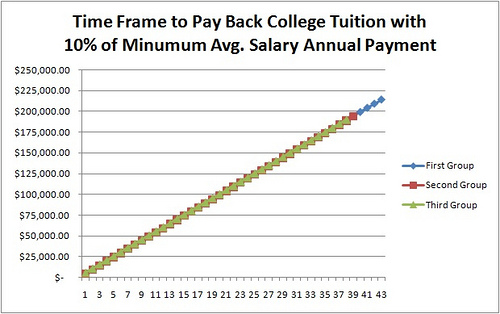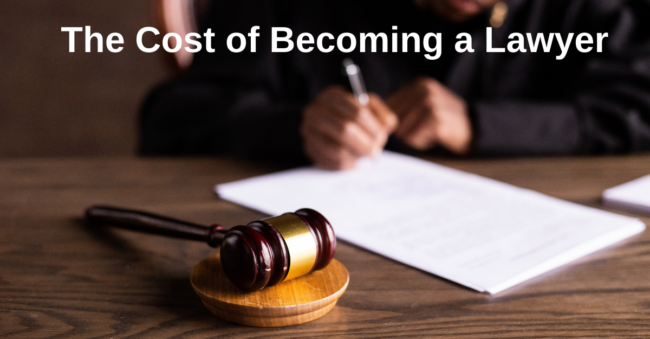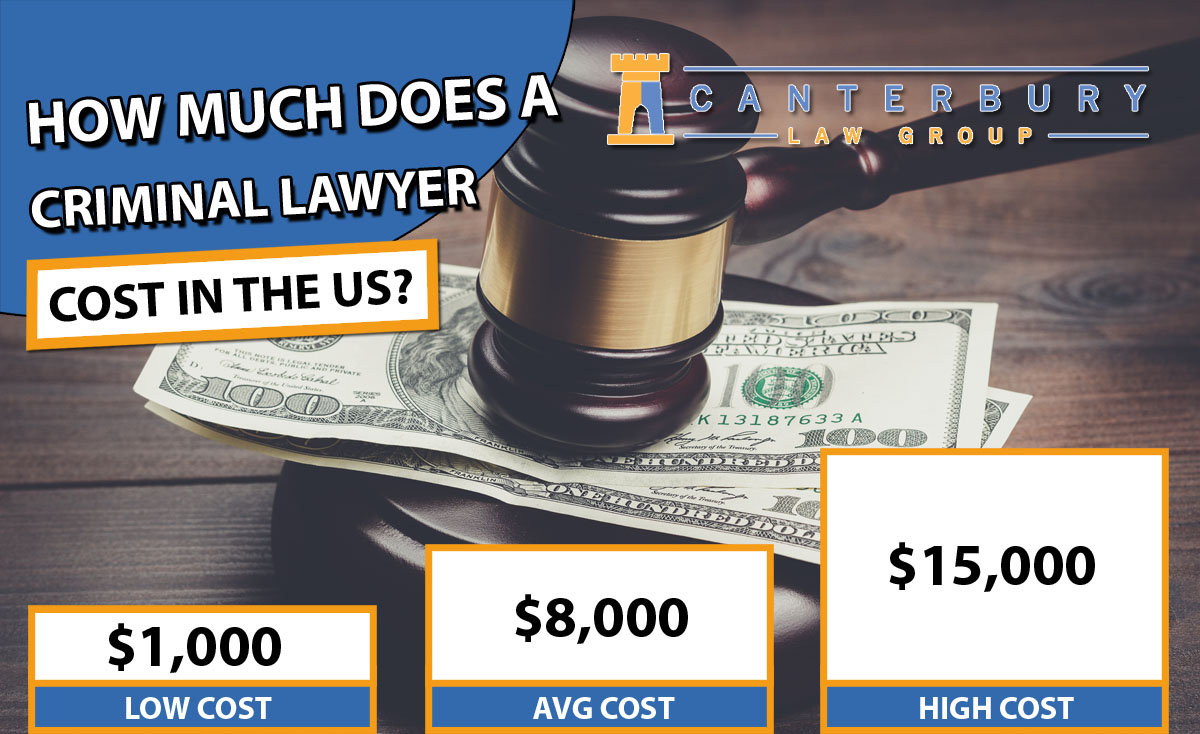How Much Does It Cost to Become a Lawyer?

The cost to become a lawyer in the United States ranges from $150,000 to $300,000. This estimate includes tuition, books, and living expenses for law school.
Pursuing a career in law requires a significant financial investment due to the costs associated with completing a Juris Doctor (JD) program. Prospective lawyers must first obtain a bachelor’s degree, which adds to the educational expenses before even setting foot in a law school.
Tuition fees vary widely between institutions and can be affected by factors such as the prestige of the school, geographic location, and whether the institution is public or private. Beyond tuition, law students must also account for the cost of textbooks, which can be substantial, and the living expenses during their years of study. The journey to becoming a lawyer also involves passing the bar exam, which may entail additional costs for preparatory materials and exam fees. Despite the steep financial hurdle, many find the possibilities of a legal career, ranging from private practice to public service, to be a worthwhile investment.
The Road To Law: Financial Milestones
Embarking on the journey to become a lawyer involves a series of significant investments. Understanding the financial milestones along the way is crucial. It ensures those dreaming of a legal career can adequately plan and budget for what’s ahead. Let’s break down the costs into clear steps.
Undergraduate Education Expenses
The first step towards law school is obtaining an undergraduate degree. Tuition fees vary widely depending on whether you attend a public or private university. Other costs include books, housing, and living expenses. Many students also consider scholarships and financial aid options to lessen the burden.
| Expense | Public University | Private University |
|---|---|---|
| Tuition | $10,000 – $25,000 / year | $35,000 – $60,000 / year |
| Books & Supplies | $1,200 – $1,500 / year | $1,200 – $1,500 / year |
| Room & Board | $10,000 – $12,000 / year | $12,000 – $15,000 / year |
Lsat And Application Fees
After completing undergraduate studies, the next step is taking the Law School Admission Test (LSAT). This standardized test comes with its own costs. Registering for the LSAT requires a fee, as does sending scores to law schools. Each law school application also entails a fee.
- LSAT Registration: Approximately $200
- LSAT Prep Course: $0 (self-study) to $1,500
- Score Reports: $45 per law school
- Application Fees: $60 – $100 per school
Prospective law students should factor in these costs early to ensure a seamless transition into the world of legal education. By knowing these financial milestones, you can plot your course to the courtroom with confidence and clarity.

Credit: www.goodfinancialcents.com
Tallying Up Law School Costs
Embarking on a legal career is a noble and ambitious goal. It can also be quite an investment. Understanding the expenses involved in becoming a lawyer is crucial. Let’s break down the costs of law school into digestible parts.
Tuition And Fees
Law school tuition varies widely. The prestige, location, and type of law school impact the price. Public schools often offer lower rates to in-state students. Here’s a glimpse at potential costs:
- Public law schools (In-state): $20,000 – $40,000 per year
- Public law schools (Out-of-state): $30,000 – $50,000 per year
- Private law schools: $40,000 – $60,000+ per year
Fees for admissions tests, bar exams, and bar prep courses add to your total. Prepare for four to five years of spending for these items.
Books, Materials, And Other Educational Costs
Books and materials are essential for success. The cost often shocks new students.
| Year | Cost Range |
|---|---|
| 1L (First-Year) | $1,000 – $3,000 |
| 2L and 3L (Second and Third Year) | $500 – $2,500 per year |
Licensing exams have separate fees, often totaling over $3,000.
Living Expenses And Opportunity Costs
Living expenses, including rent, food, and transportation, must factor into your budget. These can range from:
- Low cost of living areas: $10,000 – $20,000 per year
- High cost of living areas: $20,000 – $40,000 per year
Opportunity cost refers to income you forfeit while studying. The impact varies based on your prior earnings.
Being strategic with resources helps manage costs and mitigate debt. Scholarships, part-time work, and financial aid can also ease the financial burden.
Navigating Financial Aid And Scholarships
Embarking on the journey to become a lawyer involves significant financial commitment. Understanding what types of financial aid and scholarships are available can significantly reduce the burden. Let’s explore the options that can pave the way to a successful legal career without incurring overwhelming debt.
Types Of Financial Aid Available For Law Students
Financing a law education is manageable with various forms of aid. Students can choose from federal aid, institutional aid, state aid, and work-study programs. Researching each option is key to creating a comprehensive financial plan.
- Federal Grants: Money you don’t have to pay back.
- Institutional Scholarships: Funds from law schools for academic excellence or diversity.
- State Aid: State-specific financial support.
- Work-Study Programs: Part-time work to earn money while studying.
Securing Scholarships And Grants
Proactive search for scholarships and grants can greatly decrease tuition expenses. Law students should tap into resources like school financial aid offices, legal associations, and scholarship databases. Every scholarship counts.
| Resource | Benefit |
|---|---|
| School Financial Aid Office | Tailored institutional scholarship information |
| Legal Associations | Field-specific scholarship opportunities |
| Scholarship Databases | Broad search for applicable awards |
Understanding Loan Options
Loans are a reality for many law students. Knowing the difference between federal and private loans is essential. Federal loans often offer lower interest rates and more flexible repayment plans. Private loans can fill gaps but may come with higher costs.
- Determine total loan amounts needed.
- Compare federal vs. private loan terms.
- Consider future earning potential for repayment.
Additional Financial Considerations
The journey to become a lawyer involves more than just tuition fees. You will face a spectrum of additional costs. These costs can impact your budget significantly. Understanding these expenses ensures there are no surprises on your path to the bar.
Bar Exam Fees And Preparation Costs
Securing your legal license demands passing the bar exam. The cost doesn’t stop at the exam fee itself. You should also consider the materials and courses that prepare you for this critical test.
- Bar exam registration fees vary by state but can range from $250 to $1,000.
- Most candidates invest in preparation courses costing between $1,000 to $4,000.
- Additional study materials and practice tests may add up to a few hundred dollars more.
Licensing And Continuing Education
Once you pass the bar exam, the financial commitment continues. You’re required to pay for your initial licensure and invest in continuing education to maintain your legal standing.
| Licensing Fee | Continuing Education |
|---|---|
| State licensing board fees can exceed $500. | Annual costs can range from $100 to $1,000. |
Keep in mind, some employers might cover these costs. Also, these numbers reflect a broad average. Specific fees depend on your location and chosen specializations.
Managing Law School Debt Post-graduation
Graduating from law school is a significant milestone. Yet, managing debt post-graduation often poses a challenge for many new lawyers. This section helps navigate through various strategies that can ease the burden of law school loans, setting up a strong financial foundation for a legal career.
Loan Repayment Plans
Numerous loan repayment options are available to law school graduates. Understanding and choosing the right plan is crucial for manageable payments. Here are popular plans:
- Income-Driven Repayment (IDR): Adjusts monthly payments based on your income and family size.
- Extended Repayment Plan: Stretches the loan term, reducing monthly payments.
- Standard Repayment Plan: This plan keeps payments fixed, aiming to clear the debt in up to 10 years.
Public Service Loan Forgiveness Programs
For those in public sector or non-profit jobs, Public Service Loan Forgiveness (PSLF) can be a game-changer. The program forgives remaining loan balance after 120 qualifying payments.
| Requirement | Benefit |
|---|---|
| Employment in qualifying sectors | Loan forgiveness after 10 years |
| On-time payments | Count towards 120 needed for forgiveness |
| Required paperwork | Essential for program eligibility |
Long-term Financial Planning For Lawyers
Effective financial planning goes beyond loan repayment. Investing in retirement, savings, and insurance are core components of a secure financial future for lawyers.
- Start with a budget: Track income and expenses to control your financial flow.
- Emergency fund: Save for unforeseen circumstances to prevent debt accumulation.
- Retirement planning: Contribute to retirement accounts early for a compound growth advantage.

Credit: www.lawyersgeek.com
Real-life Cost Breakdowns
Understanding the real costs to become a lawyer takes more than ballpark figures. Real-life examples shine a light on varied paths and expenses. This section delves into the actual costs for recent law school graduates, contrasts public and private law school expenses, and outlines additional financial challenges for international students.
Case Studies Of Recent Law School Graduates
Firsthand accounts offer the most accurate depiction of financial commitments. Each narrative reflects unique choices and circumstances. Consider the case of Emily, a graduate from a mid-tier public university with a total debt of $90,000. She secured educational loans, scholarships, and part-time work opportunities to manage her expenses.
Mark, on the other hand, chose an Ivy League school with a price tag of $200,000. He accepted higher loan amounts, counting on future earnings to justify the investment.
These examples highlight the wide range of debt that law students can accrue, from conservative borrowing practices to high-stakes investments in elite education.
Comparing Costs: Public Vs. Private Law Schools
| Type of Law School | Average Annual Tuition | Additional Fees |
|---|---|---|
| Public Law School (In-State) | $27,591 | $3,000 |
| Public Law School (Out-of-State) | $40,725 | $3,500 |
| Private Law School | $49,548 | $4,000 |
The table above outlines the basic tuition and fees. Remember, these figures do not include living expenses, books, and personal costs. Beyond tuition, public law school graduates often face lower debt than private law school peers. Nonetheless, the reputation of the institution can play a significant role in future earnings and opportunities.
International Students: Additional Financial Hurdles
- Visa Application Fees
- Travel Costs to the U.S.A
- Higher Non-Resident Tuition Rates
- Mandatory Health Insurance
- Potential Language Support Classes
For international students, law school in the United States presents extra financial challenges. Aside from the basics, they must account for visa fees and higher tuition. They also bear the cost of health insurance and travel expenses. Some may need additional funds for English language courses. These factors can add tens of thousands to their law school bill.

Credit: canterburylawgroup.com
Conclusion
Embarking on a legal career is an investment—financial, time-bound, and personal. Costs vary widely, from university fees to bar exams. Aspiring lawyers must budget wisely while seeking scholarships and grants. Remember, this expenditure paves the way for a rewarding profession in law.
Plan your journey meticulously and the returns could well outweigh the initial costs.
Introducing Jonah Plum, a legal luminary whose journey through the corridors of justice has been intertwined with the eloquence of the written word. Born and raised in the vibrant city of Seattle, Washington, Jonah's early fascination with language and debate laid the foundation for a remarkable career in law.
Jonah's scholarly odyssey began at Harvard Law School, where they immersed themselves in the study of jurisprudence, honing their analytical prowess and legal acumen. Armed with a law degree, they entered the legal arena, navigating courtrooms and boardrooms with a fervor for justice. Yet, it was the realization of the transformative power of the written word that led Jonah to pivot from legal briefs to the world of blogging.
A digital advocate in the truest sense, Jonah recognized the need for demystifying legal concepts and making them accessible to a broader audience. This blog, a virtual repository of legal insights, transcends geographical boundaries, connecting with a global readership hungry for clarity amidst legal complexities.
Beyond the black letter of the law, Jonah delves into the human stories that underscore the legal landscape. Their writing goes beyond legal analysis, weaving narratives that humanize the law, shedding light on its impact on individuals and society.






